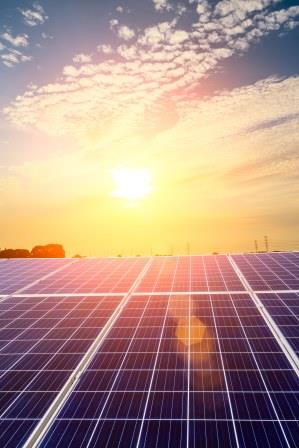

Printable PDF version
Subscribe to our newsletter
Climate Change Costs
Construction & Climate Change
Lighting the Way
Construction
Management Specialists
111 Pine Street, Suite 1315
San Francisco, CA 94111
(415) 981-9430 (San Francisco office)
1020 B Street
San Rafael, CA 94901
(415) 981-9430 (North Bay office)
6518 Lonetree Blvd., Suite 164
Rocklin, CA 95765
(916) 742-1770 (Sacramento office)
4655 Cass Street, Suite 214
San Diego, CA 92109
(858) 886-7373 (San Diego office)
8538 173rd Avenue NE
Redmond, WA 98052
(206) 571-0128 (Seattle office)
2063 Grant Road
Los Altos, CA 94024
(650) 386-1728 (South Bay office)
WeWork: Pacific Design Center – Red Building
750 N San Vicente Blvd., Ste 800 West
Los Angeles, CA 90069
(424) 343-2652 (Los Angeles, CA office)
1a Zoe House, Church Road, Greystones
Wicklow, A63 WK40, Ireland
+353 86-600-1352 (Europe office)
To serve new and existing clients, TBD is expanding from our West Coast base to include a new office location on the East Cost in the New England area.
www.TBDconsultants.com
As Covid-19 starts to come under control we turn our attention to climate change. Here we look at what's involved and what it will be costing us.
The construction industry has been addressing issues related to climate change for a long time now. The LEED rating system for buildings began encouraging environmentally-sensitive construction back in 1994, and there have been other, more targeted, green building rating systems complementing it. Various green building initiatives have come from Federal, state, institutional and commercial entities have all been making 'green construction' become the norm, rather than the exception. They have helped nibble away at construction’s estimated contribution to global carbon emissions of close to 40%.
One study by the US Energy Information Administration in 2010 estimated the building sector as being responsible for 44% of US CO2 emissions, ahead of even the transportation sector (34%) and the industrial sector (21%). This study was carried out in 2010, 16 years after LEED was introduced and the rating system was on its third iteration. The situation may have improved somewhat in the past decade, but the construction industry is known for being very slow to change.
Almost three quarters of the carbon emissions associated with construction relate to the burning of fossil fuels. The steadily increasing usage of solar power, along with the banning of natural gas as a power source by many local authorities is helping immensely with this aspect. A new type of solar panel is being developed that almost doubles the effectiveness of panels in turning the Sun’s energy into electricity. Those kinds of technologies address the use of fossil fuels during the life of the building while it is occupied. The more frequent adoption of prefabrication in the construction of the building can also lead to more efficient usage of power and less need for diesel-powered on-site construction plant and equipment.

The other contributing factor to construction’s carbon emissions is the choice of construction materials. The term normally used for this is Embodied Carbon and it comes from the manufacture and delivery of materials, as well as the construction process when installing it. This has been calculated as contributing 11% of the global carbon emissions. LEED has addressed these kinds of issues by encouraging locally-sourced materials (less fuel burned getting the materials to site), recycling materials (reducing fuel usage in extracting raw material and producing the product), and the use of sustainable materials such as bamboo and wood products (which are carbon absorbers during their growth stage).
Steel and concrete have been the favorites for structural systems, but together they contribute about 16% of the world’s CO2 emissions, fairly evenly split between the two. That is similar to the total US emissions. Steel’s contribution mostly comes from the use of coking coal to fire blast furnaces, and the use of hydrogen as an alternative fuel is one option being studied. Concrete’s contribution is a harder problem to solve, since it is linked to the chemical reactions involved in converting limestone into cement. One solution is to capture the CO2 emissions before they enter the environment. The problem with these kinds of solutions, at present, is that they are more expensive to use than traditional methods (not taking into account the future cost of the long-term effects of climate change).
The other option is to use less of those materials, through innovative design solutions that reduce the steel and concrete content or finding a different material for the building’s structure. Happily, engineers are coming up with much improved methods for supporting even high-rise buildings with timber as the structural component in the form of cross-laminated members. We may have a gut reaction against cutting down trees, but their increased use in construction will also generate a financial incentive for planting more.
Better recycling and reuse would reduce the need for the extraction and processing of natural resources. A report commissioned by the G7 nations suggested that these activities account for over 90% of global biodiversity loss and water stress, and around 50% of global greenhouse gas emissions. Of course, some of that extraction and processing relates to the production of steel and cement, so there is some overlap with these issues.
Coming up with new technology and methods to make the construction industry more of a solution to the climate crisis will be essential in the longer term, but simply implementing the known solutions will take us a long way. These include more recycling of materials and reuse of existing buildings, using prefabrication in the construction of new buildings, careful selection of materials to reduce the embedded carbon content, designing buildings to be more energy efficient and making maximum use of natural heating, cooling and lighting, and even implementing systems like just-in-time (JIT) delivery to reduce material waste and handling.

The steadily rising use of green technologies, such as solar and wind power generation, has led to a steady decrease in the cost of implementing them. It used to be necessary to provide hefty subsidies to entice people to use solar, but now that is the economically beneficial option. We can expect that to be the situation with other climate-sensitive technologies as well. The more you produce of something, the cheaper it gets, to the point where profit becomes the incentive for using that technology.
When the ozone hole was identified, we took action and were effective in reducing the level of CFCs eating away at the ozone layer, so now we need to apply the same kind of resolution to the problem of other greenhouse gasses.
Here we look at the kind of thing that we can do in the contruction industry to take a step towards combating climate change.
Design consultant: Katie Levine of Vallance, Inc.